The Renaissance is a period of intense mathematical activity, but it is not mathematics as somebody who has studied mathematics at school today would recognise it but rather practical mathematics, that is mathematics developed and utilised within a particular practical field of work or study. It should be emphasised that this is not what we now know as applied mathematics, which is, as its name suggests, the application of an area of pure mathematics to the solution of problems in other fields. Practical mathematics is, as already stated above, mathematics that evolves whilst working on problems in a variety of field, which are susceptible to mathematical solutions. This is, of course, the province of the Renaissance Mathematicus the eponym of this blog, and as I wrote in an earlier blog post, Why Mathematicus?
If we pull all of this together our Renaissance mathematicus is an astrologer, astronomer, mathematician, geographer, cartographer, surveyor, architect, engineer, instrument designer and maker, and globe maker. This long list of functions with its strong emphasis on practical applications of knowledge means that it is common historical practice to refer to Renaissance mathematici as mathematical practitioners rather than mathematicians.
One major area of practical mathematics that bloomed and flourished in the Renaissance was surveying, as I described in detail in a post in my Renaissance science series. The root word survey has over the centuries acquired many different meanings, but it has a visual origin from the Medieval Latin supervidere “oversee, inspect,” from Latin super “over” plus videre “to see”. Renaissance land surveying is totally dependent on line-of-sight observations. The legendary straight Roman roads were so straight because the engineers laid them out from high point to high point by line of sight and then instead of going around obstacles cut through them, bridged them or whatever. Triangulation, the major advance in surveying that emerged during the Renaissance, also relies on direct line-of-sight observation from high point to high point to construct its triangles.
What, however, happens when you need to survey a territory were you literally can’t make direct line-of-sight observations? This is exactly the problem that had to be solved with the massive expansion in metal ore mining that took place during the Renaissance in eastern Europe. To solve it the miners developed their own form of practical mathematics that became known as Markscheiderkunst and its practitioners as Markscheider. Thomas Morel has written a fascinating and highly informative book, Underground Mathematics: Craft Culture and Knowledge Production in Early Modern Europe[1] that investigates the origins and evolution of this branch of practical mathematics from its origins up to the beginning of the nineteenth century.
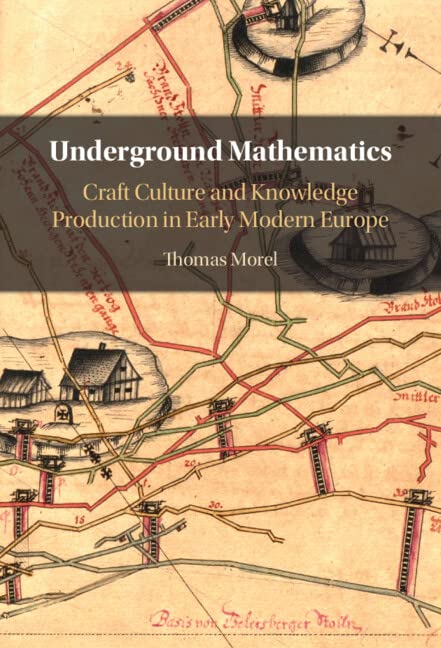
The terms Markscheider and Markscheidekunst are German and Morel’s book concentrates on the mining history of the mining regions in Eastern Germany because that is where the then modern mining industry developed and as Morel explains the knowledge that the German miners developed was then exported all over Europe. If you wanted to start your own mining endeavours, you imported German miners. As I explained in an earlier post this is why Nürnberg developed into a major centre for the manufacture of pencils. Miners in the service of Nürnberg companies were drafted into Borrowdale in Cumbria to exploit the recently, by accident, discovered graphite deposits in the sixteenth century and brought back the knowledge of this new writing material with them when they returned home to Nürnberg.
The Markscheidekunst, ‘the art of setting limits’, comes from the German words Mark, here with the meaning of boundary, and Scheiden meaning separate, so it means the setting of boundaries, originally between mining claims and the Markscheider is the surveyor, who determines those boundaries. On the surface, no different to other surveying but determining the same boundaries under ground becomes a whole different problem, which led to the Latin translation of Markscheidekunst, geometria subterranea.
The obvious difference between the German Markscheidekunst a term of the Bergmannsprache (the miners’ dialect) and the scholars’ Latin term geometria subterranean displays a divergence between the two worlds that illustrates one of the central theses of Morel’s narrative, which begins in the first chapter.
Morel starts there where somebody, like myself, with only a superficial knowledge of Renaissance metal ore mining would expect him to start with Agricola’s De Re Metallica. The first chapter covers both the publications on mining of Georgius Agricola (1494–1555) and of Erasmus Reinhold the Younger (1538–1592), the son of the famous astronomer, Erasmus Reinhold the Elder (1511–1553). Both authors were humanist Renaissance scholars writing in Latin and Morel shows that their presentations of underground surveying don’t match with the reality of what the Markscheider were actually doing. More generally the work of the Markscheider in the Bergmannsprache was largely incomprehensible to the educated scholars.
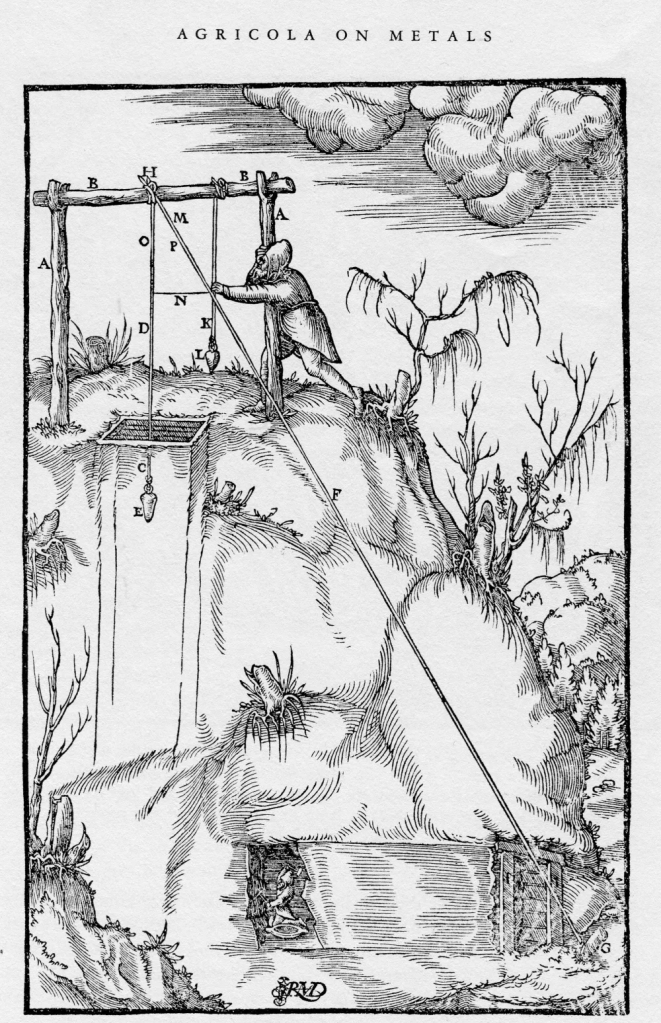
Morel’s second chapter goes into the detail of how the Markscheider actually went about their work. Firstly, how mining claims were staked out above ground and secondly how they measured and mapped the underground mine galleries, which followed the twist and turns of the veins of metal ore. Also, how they ensured that the underground galleries didn’t extend beyond the boundaries of the claim staked out on the surface. The Markscheider developed a practical mathematical culture that was substantially different from the learned mathematical culture of the university-trained scholars. In the early decades, the world of the Markscheider was, like other trades, one of an oral tradition with apprentices learning the trade orally from a master, who passed on the knowledge and secrets of the trade. Morel traces the evolution of this oral tradition and also the failure of university trained mathematicians to comprehend it
Despite their differences to their learned colleagues in the sixteenth century, because of the economic importance of the metal ore mines the Markscheider acquired a very high social status and achieved standing at the courts in the mining districts. They became advisers to the aristocratic rulers and their expertise was requested and applied in other areas of mathematical measurement such as forestry. All of this is dealt with in detail in Morel’s third chapter.
The seventeenth century saw the development of a scribal tradition with the appearance of the manuscript Geometria subterranea or New Subterranean Geometry, allegedly written by the mining official Balthasar Rösler (1605–1673). These manuscripts evolved over the century as did the methods of surveying and the instruments used by the mine surveyors. Surprisingly this literature remained in manuscript form for most of the century only appearing in print form with Nicolaus Voigtel’s Geometria subterranea in 1686. In his fourth chapter, Morel gives a detailed analysis of this manuscript tradition and offers and explanation as to why it remained unprinted, which has to do with the way these manuscripts were used to train the apprentice surveyors.
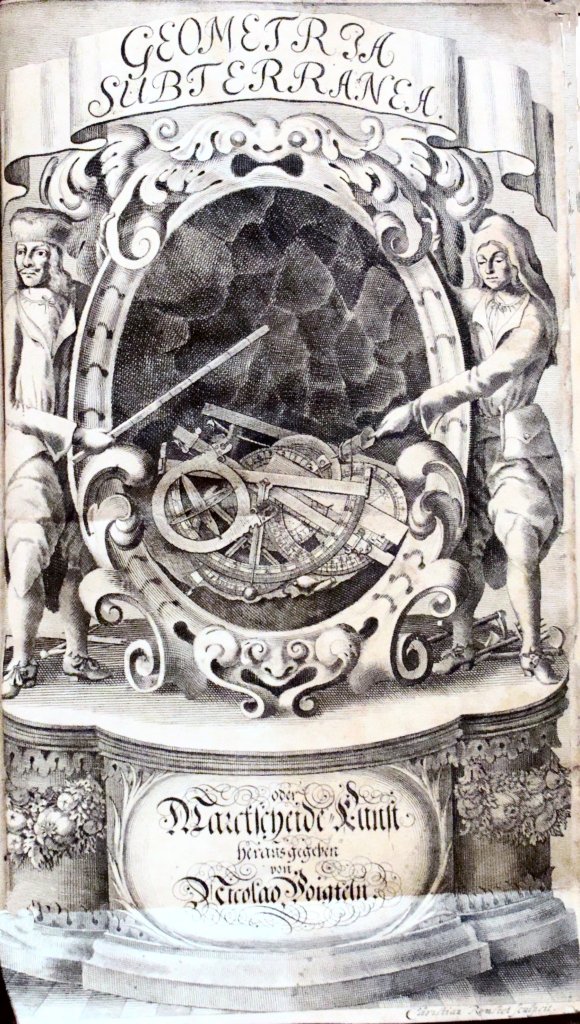
Chapter five takes into the late seventeenth early eighteenth centuries, following the publication of Nicolaus Voigtel’s Geometria subterranea and the life and work of Abraham von Schönberg (1640–1711), Captain-general of the Saxon mining administration, and his endeavours to revive the local mining districts in the aftermath of the Thirty Years War. Central to Schönberg’s efforts was the development of the mining map of which the most spectacular example in the Freiberga subterranea, a gigantic cartography of the Ore Mountains running continuously over several hundred sheets. Ordered by Schönberg and realised by the surveyor and mine inspector, Johann Berger (1649–1695).
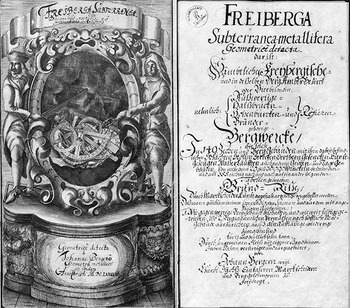
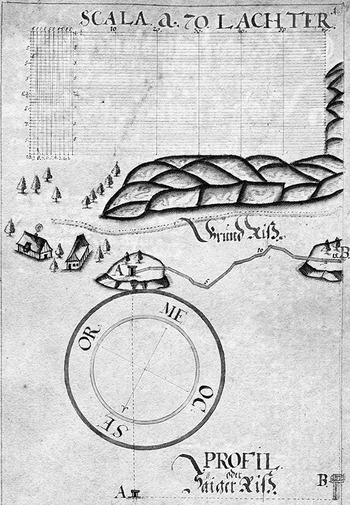
Morel’s sixth chapter takes the reader into the eighteenth century and the attempts to raise the academic level of the mathematical knowledge of the mine surveyors and engineers leading up to the establishment of the Bergakademien (in English, mining academies). As Morel explains these were initially not as successfully as might be supposed. Morel takes his reader through the problems and evolution of these schools for mine surveyors. He also follows the significant developments made outside such institutions, particularly by Johann Andreas Scheidhauer (1718–1784). A recurring theme is still the inability of university educated mathematicians to truly comprehend the work of the practical mathematicians in the mining industry. As Morel writes at the beginning of his summary of this chapter, “Teaching a mathematics truly useful for the running of ore mines was a daunting task that underwent important transformations during the eighteenth century.”
Morel’s final chapter is dedicated to the story of the Deep-George Tunnel, a 10 km long drainage tunnel at a depth of 284 m, which connected up numerous mines in the Harz mining district. An extraordinary project for its times. Morel shows how the planning, for this massive undertaking, was based on data recording techniques for the run of the mine galleries developed in the preceding centuries rather than new surveying. The theoretical planning was on a level not previously seen in ore mine surveying. Morel also describes in detail an interesting encounter between the practical mining engineers and a theoretical scientist. The Swiss scholar Jean-André Deluc (1727–1817) visited the area in 1776, just before the start of the project, to test the calibration of his barometers to determine altitude by descending into the depths of the mine, having previously calibrated them by ascending mountains. Impressed by the undertakings of the mining engineers he returned several times over the years observing the progress of the tunnel and reporting what he observed to the Royal Society of London.

The story of the Deep-George Tunnel is a very fitting conclusion to Morel’s narrative of the evolution of the practical mathematical discipline of subterranean surveying in the ore mines of eastern Germany. The breadth and depth of Morel’s narrative is quite extraordinary and my very brief outlines of the chapters in no way does it justice, to do so I would have to write a review as long as his book. Morel is an excellent stylist, and his book is a real pleasure to read, a rare achievement for a highly technical historical text. There are extensive footnotes packed with sources and information for further reading. There is an almost thirty-page bibliography of manuscript, printed primary, and printed secondary sources, and the book closes with an excellent index. The book is nicely illustrated with grayscale reproductions of original diagrams.
This is truly a first-class text on an, until now, relatively neglected branch of practical mathematics, which should appeal to anyone interested in the history of mathematics or the history of mining. It will also appeal to anybody interested in a prime example of the narrative history of a technical disciple that combines mathematics, technology, politics and economics.
[1] Thomas Morel, Underground Mathematics: Craft Culture and Knowledge Production in Early Modern Europe, Cambridge University Press, 2023.